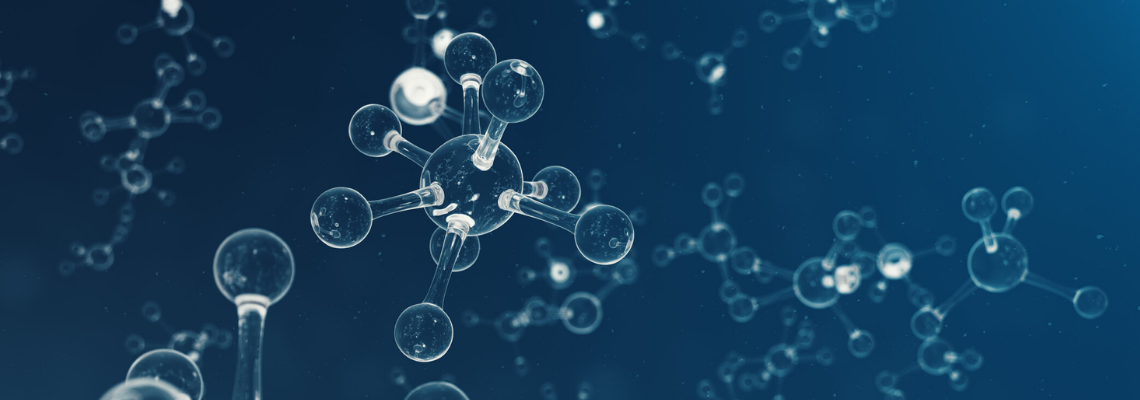Benefits of Photobiomodulation Therapy
Photobiomodulation: What is it, and how does it affect health?
For centuries, light has been recognized for its vital role in health and wellness. Without the necessary spectrum of light, your patients’ mental, immune, and cellular health will be deeply—and dangerously—affected. Photobiomodulation (PBM) therapy utilizes the natural response to light as a way to improve overall health and wellness. Originally known as low-level light therapy or low-level laser therapy (LLLT), PBM is an FDA-approved form of phototherapy that has become widely used in the USA. Well-known practitioners in the field like Dr. James Carroll have successfully used PBM therapy for almost four decades.
Using non-thermal infrared and near-infrared light, photobiomodulation initiates chromophores photochemically. In particular, PBM boosts the activity of cytochrome c oxidase. This enzyme positively affects the levels of nitric oxide and calcium ions. PBM also moderates the activity of adenosine triphosphate (ATP) and reactive oxygen species (ROS), all while increasing the cellular transportation of electrons.
Additional positive effects of PBM therapy are constantly coming to light. According to leading expert Dr. Praveen Arany, the benefits of photobiomodulation therapy include reducing inflammation, promoting tissue regeneration, moderating immune responses, and alleviating pain, among other positive effects. With few negative side effects, PBM has developed significant potential as the future of whole-body therapy and preventative treatment.
The Medicine of Light
PBM’s main mechanisms of action are through chromophores. Using lasers and light-emitting diodes (LEDs) to produce red light or near-infrared light, PBM therapy exposes the mitochondria to high levels of photons. As described by leading PBM expert Dr. Michael Hamblin, these photons may dissociate nitric oxide from cytochrome c oxidase chromophores, which ultimately increases electron transport. These photons may also activate light-sensitive ion channels, allowing for the transportation of calcium molecules.
Since the advent of biophotonics, additional guidelines for the most effective use of PBM have become commonplace. According to the theory of biphasic dose response or the Arndt-Schulz curve, PBM is only effective within a specific range. It’s best to slowly work up from a low level of exposure. Beyond the optimum parameters for power density, fluence, and wavelengths, the benefits of PBM begin to wane. At high levels, PBM has potentially harmful effects. However, within the recommended parameters, photobiomodulation therapy offers transformative benefits.
Benefits of Photobiomodulation Therapy
Cellular Health and Cancer Prevention
Photobiomodulation therapy boosts patient health at a mitochondrial level. By initiating cytochrome c oxidase, PBM therapy encourages the transference of energy to cell tissues. It’s also effective for enhancing stem cell differentiation, inducing cell proliferation, and restoring normal cell function in abnormal conditions.
As revealed in a recent systematic review, photobiomodulation interventions play a promising role in cancer treatment. PBM prompts apoptosis, acts as a modulator for reactive oxygen species, protects against oxidative stress, and fights the proliferation of cancer cells directly. PBM has effectively been used to manage the side effects of chemotherapy and chemoradiation, including oral mucositis.
Regenerative and Protective Care
The regenerative effects of photobiomodulation are likely the most well-known. PBM has long been considered to fight against many age-related conditions by preventing mitochondrial dysfunction and protein abnormalities. Evidence continues accumulating that age-related diseases are connected to irregular protein folding, and a recent study found that PBM effectively promoted healthy angiogenic proteins in stem cells from exfoliated deciduous teeth. Likewise, consistent PBM treatment is considered to increase immune health and ward off preventable illnesses. By stimulating ATP and triggering cascade signaling with the nucleus and endoplasmic reticulum, photobiomodulation can also have a long-term positive impact on metabolism. Both in vitro and in vivo studies have shown the positive regenerative and protective effects of PBM.
For decades, PBM therapy has been used to promote wound healing. Photobiomodulation’s positive effects on cellular behavior make it a viable treatment for increasing the rate of tissue repair while limiting long-term damage. In one clinical trial, photobiomodulation therapy remarkably reduced pain and accelerated healing time for post-operative patients.
Neurological and Mental Health
From trauma-related disorders such as global ischemia to neurodegenerative conditions such as dementia, photobiomodulation has particular promise for neurological and mental health conditions. Neuropathy, macular degeneration, glaucoma, Alzheimer’s disease. Though these neurological diseases are expressed through vastly different pathways, PBM has a positive influence on all of them. Low-level laser irradiation can increase chromophore activity transcranially, thereby activating neural apoptotic pathways and autoinflammatory responses. PBM also improves the flow of cerebrospinal fluid and aids in clearing toxic products from the brain.
Even for neurodevelopmental diseases such as schizophrenia and autism, PBM has been considered a form of therapy and treatment for long-term improvement. In animal models, photobiomodulation was found to be effective in treating Parkinson’s disease. As PBM laser light stimulates neurogenesis, PBM can also assist in traumatic brain injury and stroke recovery. Recently, PBM has been considered as a viable treatment plan for multiple mental disorders, including seasonal affective disorder (SAD), possibly by mimicking natural light sources.
Cardiovascular Health and Inflammation
Photobiomodulation therapy bolsters heart health in many ways. First, PBM improves basic heart function. In a placebo-controlled clinical study, PBM low-powered lasers were found to improve blood flow, redox viscosity, and red blood cell aggregation. By promoting nitric oxide production, PBM positively affects vasodilation. Photobiomodulation therapy also manages the thickness of the cardiac wall and even reduces the size of myocardial infarctions.
Second, PBM fights against inflammation. In one comprehensive case report, PBM was shown to increase production of adiponectin, an anti-inflammatory adipokine. Additionally, PBM increases blood flow to damaged tissue and promotes antioxidant defenses, both of which mitigate unnecessary inflammatory responses.
Integrating Photobiomodulation Therapy
As an effective therapy for whole-body health and wellness and an accessible form of preventative care, your patients may be interested in integrating photobiomodulation therapy. To ensure that your patients are getting the most out of low-level laser treatments, it’s important to quantify the results of PBM with consistent testing. Our wellness health screening tests provide in-depth information on the essentials of your patient’s health. With results in only 24 hours, our testing panels are designed to help you provide the best patient care. Explore more from Access Medical Labs.
You May Also Like
These Related Blog Posts

Molecular Hydrogen Therapy - The Future of Health

Curcumin: Anti-Inflammatory, Antidepressant, and More




